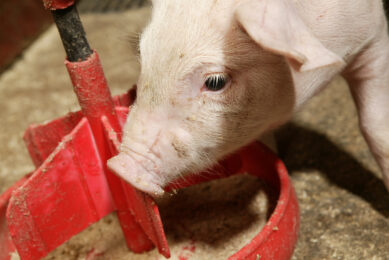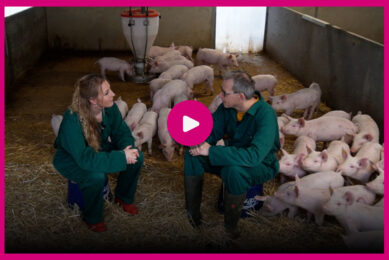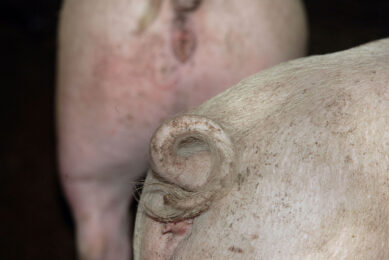Should piglet tail docking be banned in the EU?
Most farmers will have come across the problem at one stage or another: tailbiting. To prevent this, the practice of preventive taildocking is widespread. However, in an ideal world, it should not be necessary to trim the tails off piglets to stop them. Should piglet tail docking be banned in the EU?
As part of the continuing review of pig welfare, various EU committees are looking at this issue. In an ideal world, it should not be necessary to trim the tails off piglets to stop them tail biting when they get older.
Unfortunately, most farmers will have come across the problem at one stage or another, even in straw-based systems and seen the ravages of tail biting in a group of pigs, which can be horrendous.
Consequences
A severely tail-bitten pig can lose its whole tail, anus and perineum and as a result die.
A less severely bitten pig can still suffer badly and the chronic effects, such as abscessation locally and systemically, can lead to paralysis if it affects the spinal cord or can involve the lung and other organs, commonly causing condemnations at slaughter.
It is a horrible condition, one which farmers try hard to avoid in the UK by tail docking.
UK study
A study in the UK looking at nearly 63,000 pigs at slaughter and showed that 9.2% of long-tailed pigs had tail-bitten lesions but only 3.1% of docked pigs. Docking reduced the incidence of biting by 66.3%. Interestingly, 80.9% of the pigs had been tail docked, showing how widespread the practice is and how seriously farmers take the potential problem.
Obviously, slaughter pigs do not reflect those that have been severely affected and either died or have become chronic cases, so the true incidence cannot be assessed but is likely to be higher.
Profiling the biter
A recent Swedish study looked at profiling the biter not the bitten, to understand why this condition developed. They found that 70.4% of the biters were female and 29.6% male.
They were usually smaller and slower growing than their average pen mates. They spent a lot less time eating and drinking, almost half that of their unbitten larger pen mates and almost twice as much time rooting in straw and nosing other pigs and generally being more active.
Some Danish authors thought that tail biting might be the result of three mechanisms, either alone or in combination and these were frustration, stress and predisposition.
School room mechanism
One can easily picture a smaller, female pig, low down the pecking order that has poor feed-trough access, biting a larger pen mate from behind and getting away before it has turned round. It is a bit reminiscent of the school room.
This leads to a number of questions:
• Is tail biting a problem in your country?
• Is tail docking commonly carried out?
• How do you prevent tail biting?
• Are we ready to ban tail docking in the EU?











